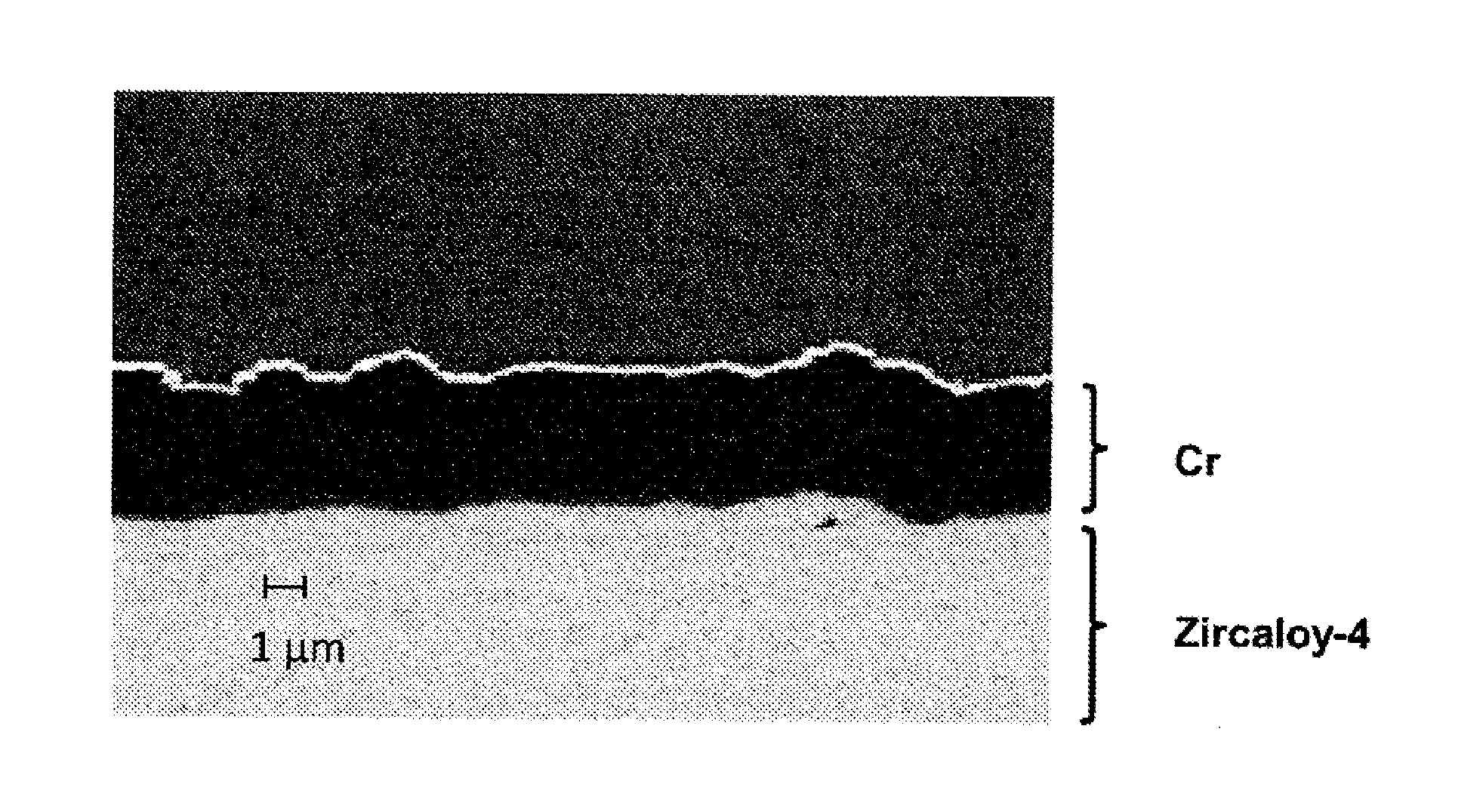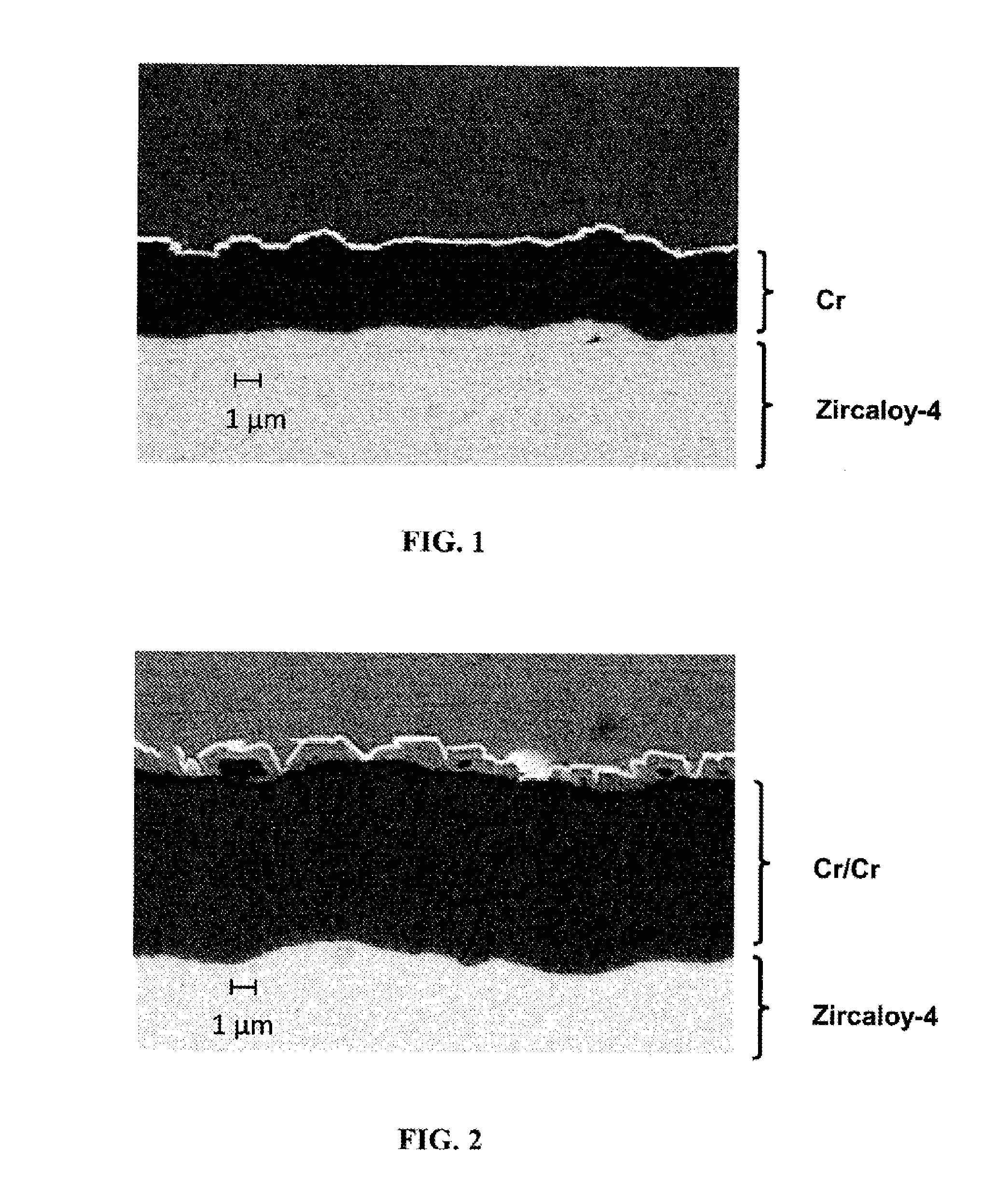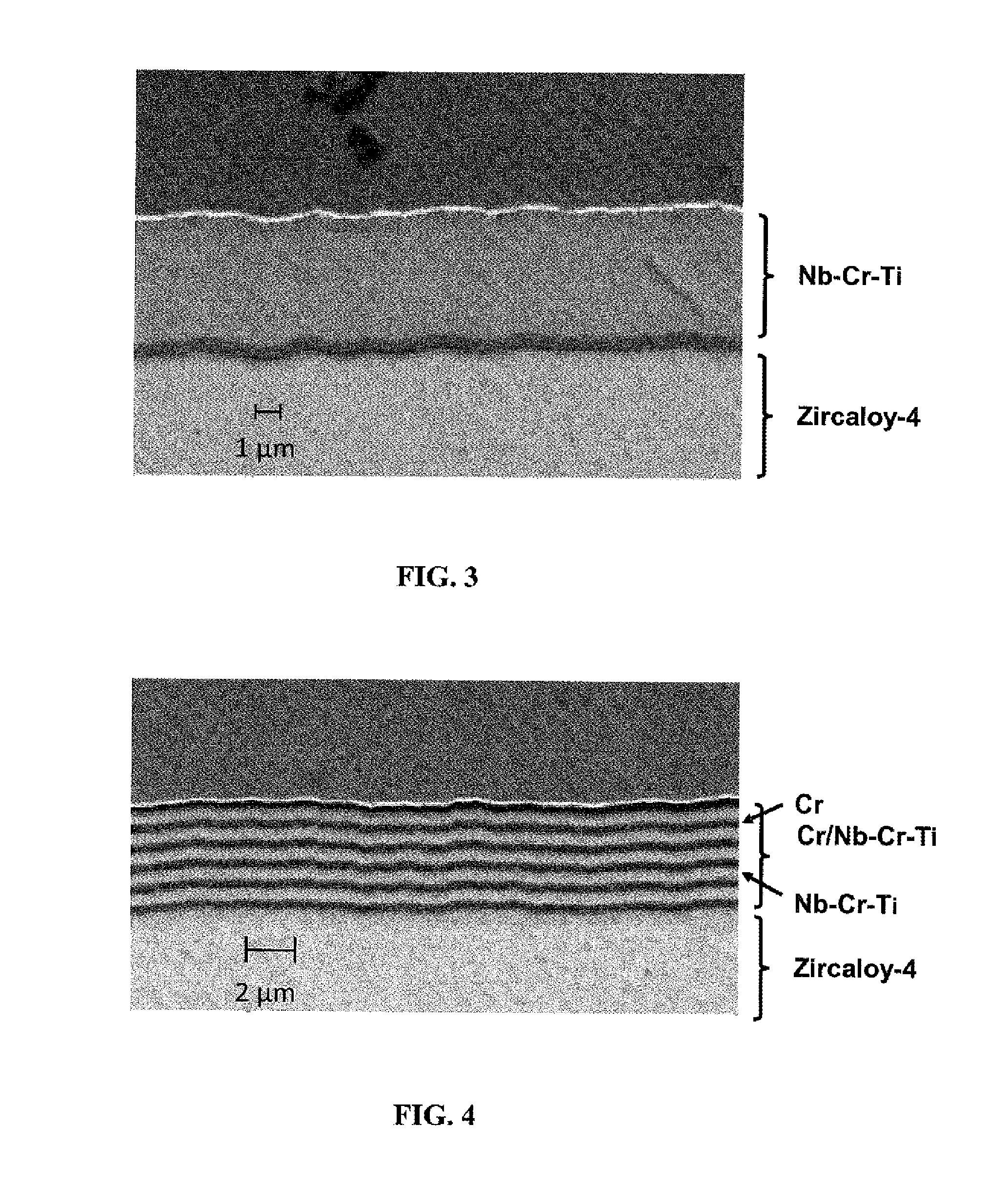Multilayer material resistant to oxidation in a nuclear environment
a multi-layer material and nuclear environment technology, applied in the field of nuclear materials, can solve the problems of insufficient sound and ductile zirconium alloy residual thickness to guarantee good mechanical properties, insufficient resistance to high-temperature oxidation encountered in accident conditions, and partly limited service life of the cladding
- Summary
- Abstract
- Description
- Claims
- Application Information
AI Technical Summary
Benefits of technology
Problems solved by technology
Method used
Image
Examples
first embodiment
[0065]According to the multilayer material of the invention, the multilayer coating is composite: the metallic layers are of different compositions. It is for example a multilayer coating designated “Cr / Nb—Cr—Ti”, the metallic layers of which are composed of a chromium-based substance (chromium and / or chromium alloy), and a ternary alloy of the Nb—Cr—Ti system. Thus, the metallic layers are i) one or more layers composed of chromium and / or a chromium alloy and ii) one or more layers composed of the ternary alloy of the Nb—Cr—Ti system.
[0066]The layers with different compositions may be present in the composite multilayer coating in variable proportions, and arranged so that they alternate or are in a random order. However, a metallic layer composed of chromium or of chromium alloy, called intermediate bonding layer, is generally the one in contact with the zirconium-based substrate, with which it displays good adherence and compatibility.
second embodiment
[0067] the multilayer coating has a major chromium content: the metallic layers are all composed of chromium and / or a chromium alloy, and form a multilayer coating designated “Cr / Cr”. A multilayer material provided with such a coating has proved particularly resistant to oxidation in accident conditions.
third embodiment
[0068] the multilayer coating has a minor chromium content: the metallic layers are all composed of a ternary alloy of the Nb—Cr—Ti system and form a multilayer coating designated “Nb—Cr—Ti / Nb—Cr—Ti”.
[0069]Preferably, for these embodiments:[0070]the chromium alloy is composed of from 80 to 99 at % of chromium, and / or;[0071]the metallic layers composed of chromium or of a chromium alloy contain at least one chemical element chosen from silicon or yttrium, and such an element present for example at a content of from 0.1 to 20 at % may confer an additional improvement in corrosion resistance, and / or;[0072]the metallic layer or layers composed of a ternary alloy of the Nb—Cr—Ti system supply additional ductility. They are then generally of small thickness, which is preferably from 5 nm to 500 nm, in order to limit the problems of neutron capture or of activation under flux.
[0073]Ternary alloy of the Nb—Cr—Ti system is the designation used by a person skilled in the art to denote this ty...
PUM
| Property | Measurement | Unit |
|---|---|---|
| thickness | aaaaa | aaaaa |
| thickness | aaaaa | aaaaa |
| thickness | aaaaa | aaaaa |
Abstract
Description
Claims
Application Information
 Login to View More
Login to View More - R&D
- Intellectual Property
- Life Sciences
- Materials
- Tech Scout
- Unparalleled Data Quality
- Higher Quality Content
- 60% Fewer Hallucinations
Browse by: Latest US Patents, China's latest patents, Technical Efficacy Thesaurus, Application Domain, Technology Topic, Popular Technical Reports.
© 2025 PatSnap. All rights reserved.Legal|Privacy policy|Modern Slavery Act Transparency Statement|Sitemap|About US| Contact US: help@patsnap.com



